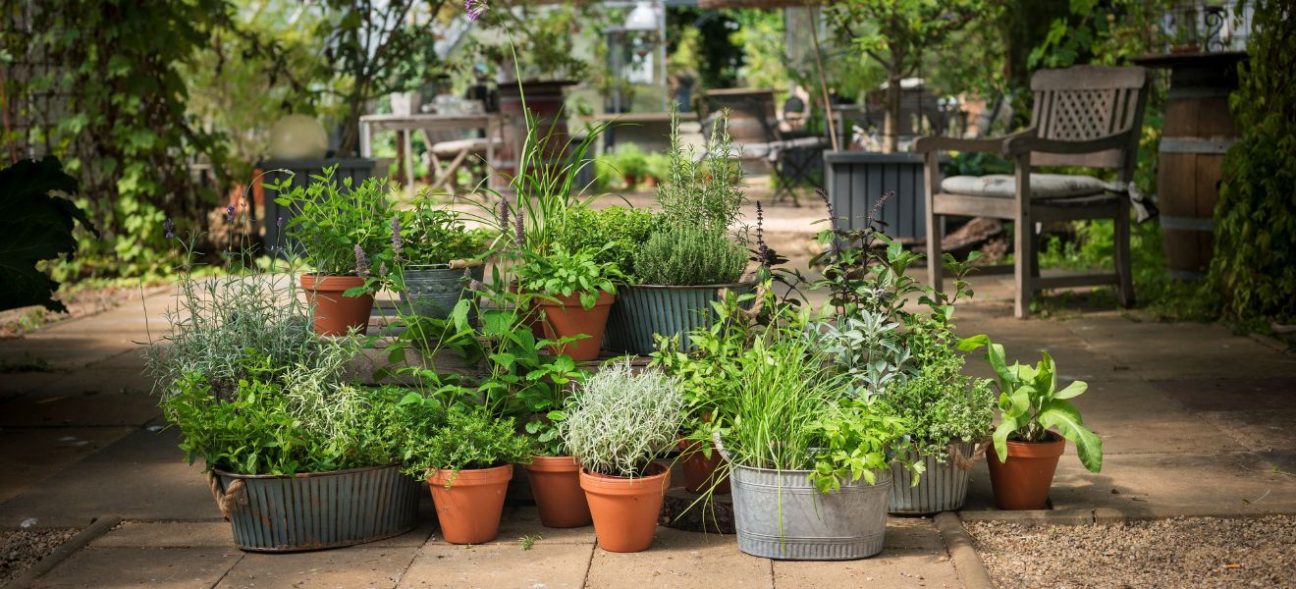In the realm of gardening, there’s something uniquely satisfying about cultivating herbs. Not only do they add a burst of flavor to your culinary creations, but they also provide an aromatic and visually pleasing addition to your home garden. Whether you’re a seasoned gardener or just starting, incorporating herbs into your garden is a rewarding endeavor.
In this guide, we’ll explore some of the top herbs to grow in your home garden, along with tips for planting, caring for, and harvesting them.
Basil
Let’s start with an herb that’s a staple in many kitchens around the world: basil. Known for its fresh, aromatic leaves and distinct flavor, basil is a versatile herb that complements a wide range of dishes, from pasta sauces to salads to pesto.
When growing basil in your home garden, ensure it receives plenty of sunlight and well-drained soil. Pinch off the flowers as they appear to encourage leaf growth, and remember to harvest the leaves regularly to promote bushier growth.
Rosemary
Next up is rosemary, a fragrant herb with needle-like leaves and a pine-like aroma. Rosemary is a hardy perennial that thrives in sunny, well-drained soil. It’s drought-tolerant once established, making it an excellent choice for gardeners in hot, dry climates. Use rosemary to add depth of flavor to roasted meats, potatoes, and bread, or infuse it into olive oil for a deliciously fragrant condiment.
Mint
Mint is another popular herb that’s prized for its refreshing flavor and invigorating scent. There are many varieties of mint, including spearmint, peppermint, and chocolate mint, each with its unique flavor profile. Mint is a fast-growing herb that spreads quickly, so it’s best to plant it in containers or in a designated area of your garden to prevent it from taking over. Use mint to flavor beverages like mojitos and mint tea, or add it to salads and desserts for a burst of freshness.
Thyme
Thyme is a low-growing herb with tiny leaves and a subtle, earthy flavor. It’s a versatile herb that pairs well with a variety of dishes, including roasted meats, soups, and stews. Thyme prefers well-drained soil and full sun, making it an ideal candidate for a sunny spot in your garden or a container on your patio. Prune thyme regularly to encourage bushy growth, and harvest the leaves as needed for fresh or dried use.
Parsley
No herb garden would be complete without parsley, a versatile herb that adds brightness and flavor to a wide range of dishes. There are two main types of parsley: curly-leaf parsley and flat-leaf parsley, also known as Italian parsley. Both varieties are easy to grow and thrive in rich, well-drained soil with plenty of sunlight. Use parsley to garnish soups, salads, and pasta dishes, or incorporate it into homemade sauces and marinades for an extra pop of flavor.
Chives
Chives are a member of the onion family and are prized for their mild onion flavor and delicate, grass-like foliage. They’re easy to grow and can be planted in the ground or containers, making them a versatile addition to any home garden. Chives prefer rich, well-drained soil and full sun to partial shade. Use chives to add a subtle onion flavor to scrambled eggs, baked potatoes, and creamy soups, or sprinkle them over salads and dips for a burst of freshness.
Cilantro
Cilantro, also known as coriander, is a pungent herb with bright green leaves and a citrusy flavor. It’s commonly used in Mexican, Indian, and Southeast Asian cuisines to add freshness and depth of flavor to dishes like salsas, curries, and noodle soups. Cilantro prefers cool weather and can bolt quickly in hot temperatures, so it’s best to plant it in the spring or fall in a partially shaded spot in your garden. Harvest the leaves regularly to prevent bolting and prolong the growing season.
Sage
Sage is an aromatic herb with silvery-green leaves and a warm, peppery flavor. It’s commonly used in Mediterranean and European cuisines to flavor meats, poultry, and stuffing. Sage is a hardy perennial that thrives in full sun and well-drained soil. Plant sage in a sunny spot in your garden or a container on your patio, and prune it regularly to encourage bushy growth. Harvest the leaves as needed for fresh use, or dry them for long-term storage.
Oregano
Last but not least, we have oregano, a flavorful herb with small, oval-shaped leaves and a robust, slightly bitter flavor. Oregano is a staple in Italian, Greek, and Mediterranean cuisines, where it’s used to flavor pasta sauces, pizzas, and grilled meats. Oregano is easy to grow and thrives in full sun and well-drained soil. Plant it in the ground or a container, and harvest the leaves regularly for fresh or dried use.
In Conclusion
It’s time to get your hands dirty and start growing some herbs in your home garden! It’s a delightful experience that connects you with nature and grants you the opportunity to add fresh and aromatic flavors to your dishes. With topsoil in Salt Lake City as your foundation, any novice or seasoned gardener can successfully grow herbs and gain satisfaction from their bountiful harvest.
Not only will you have a steady supply of herbs at hand, but you’ll also elevate your culinary skills and create new, delicious recipes that will impress everyone at the dinner table. It’s time to let your green thumb shine and enhance your cooking to new heights with home-grown herbs.

